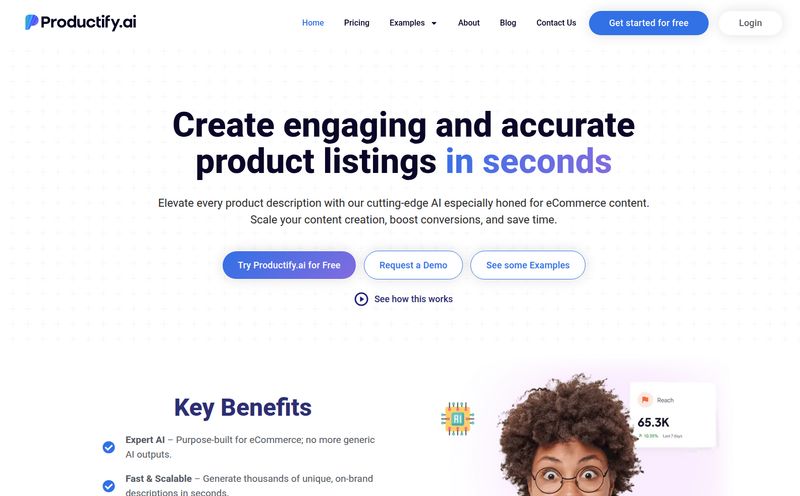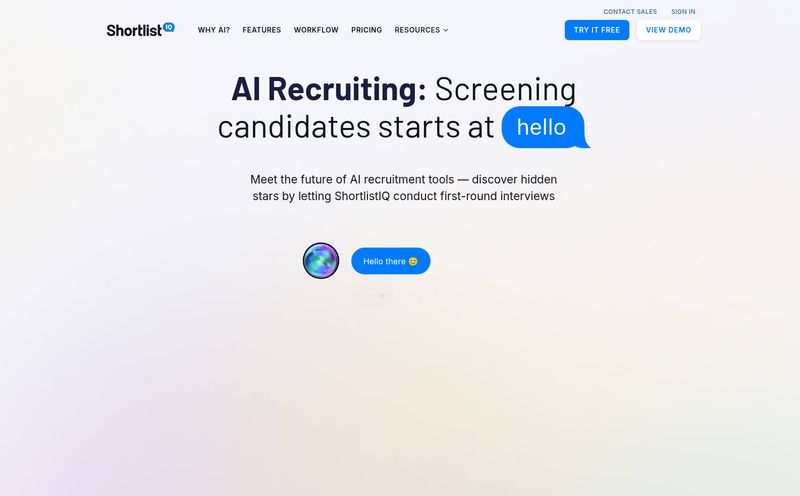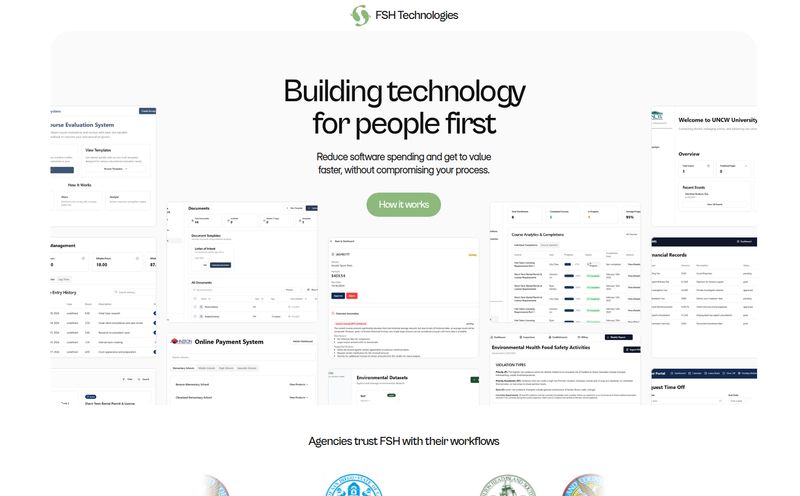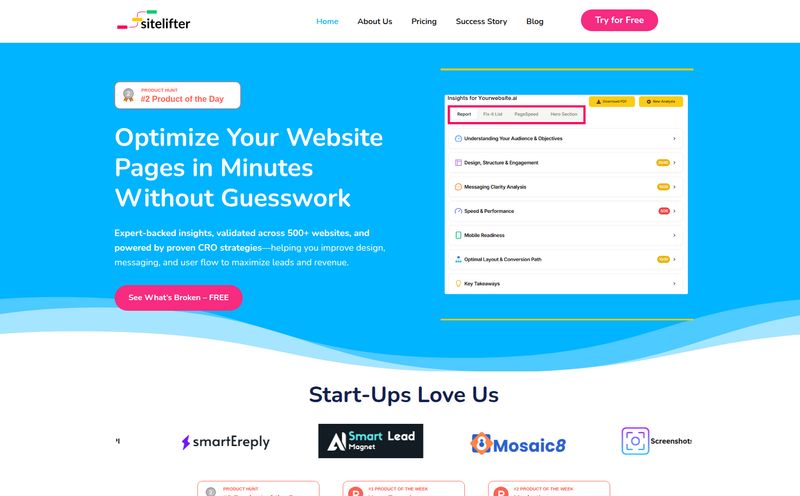Nobody gets into business because they love sorting through stacks of documents. Contracts, compliance forms, applications, invoices… it’s a soul-crushing part of the job. I’ve lost count of the number of hours I've personally watched teams burn, just trying to cross-reference a new contract with an old template. The sheer human error potential is terrifying, especially when compliance is on the line.
Every so often, a tool comes along that promises to fix this. To automate the boring stuff. To be the digital intern who never sleeps and actually enjoys reading the fine print. Today, we're looking at one of these hopefuls: TrustDoc. The name alone is promising, right? But as we all know in the world of SaaS, promises are cheap. So, I took a look under the hood to see if it’s all marketing fluff or if there’s some real magic here.
So, What Exactly is TrustDoc?
At its core, TrustDoc is an AI-powered platform designed to collate, evaluate, and verify your documents. Think of it less as a simple storage system like Dropbox and more like a smart, automated paralegal. You feed it a master template—your perfect, gold-standard version of a document. Then, you can upload new documents, and the platform’s AI will automatically compare them against that template, flagging discrepancies and giving you a clear report.
It’s built for teams that are drowning in verification tasks. I'm talking about legal departments, HR managers verifying credentials, grant administrators checking applications, or anyone who has ever muttered, “Did they remember to include clause 7.b?” under their breath.
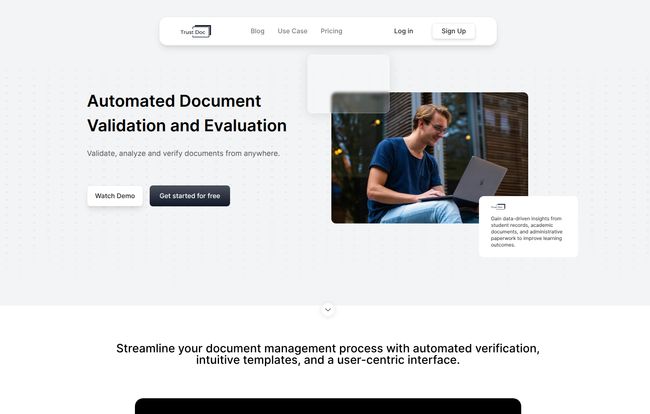
Visit TrustDoc
The Features That Actually Matter
A shiny feature list is one thing, but how does it actually work in practice? I poked around the main components, and a few things stood out.
AI-Powered Analysis and Template Comparison
This is the main event. The whole system hinges on its ability to compare a submitted document to a pre-defined template. You set up your ideal document structure—the headers, clauses, and sections that must be there. When a new file comes in, TrustDoc's AI scans it and runs the comparison. It doesn’t just do a simple text match; it's looking at structure and content. This is a huge step up from manually putting two PDFs side-by-side and letting your eyes glaze over.
AI Scoring and Justification
This is where it gets interesting. Instead of just a pass/fail, TrustDoc provides an AI-generated score. This could be a game-changer for high-volume workflows. If you have 100 applications to review, you can immediately see which ones are 98% compliant and which ones are a 60% mess, letting you prioritize your attention. The AI justification feature explains why a document got the score it did, pointing out the missing pieces or incorrect information. It saves you from having to do that detective work yourself.
Team Collaboration is Built-In
Document verification is rarely a solo sport. TrustDoc seems to get this. You can create projects, share folders with specific team members, and manage user access. This is pretty standard stuff for a B2B platform, but it’s executed cleanly here. No more emailing different versions of a file back and forth with confusing file names like `Contract_v2_final_FINAL_JohnsEdits.docx`.
Let's Talk Money: The TrustDoc Pricing Plans
Okay, the big question. What’s this going to cost? The pricing structure is actually pretty straightforward, which I appreciate. They have a free tier, which is always a great way to dip your toes in the water.
| Plan | Price | Key Features |
|---|---|---|
| Basic | $0 / month | 1 project, 5 users, 5 headers. Includes AI scoring and justification features. A great starting point. |
| Standard | $35 / month | 10 projects, 50 users, unlimited headers. Adds the AI Summarize feature. This feels like the sweet spot for most small-to-medium businesses. |
| Premium | $99 / month | Unlimited projects, 250 users. For larger organizations or teams with very high document volume. |
My take? The Free plan is genuinely useful for a small team or a solo operator wanting to test the waters. The inability to remove users is an odd quirk, but for a free product, it's a minor complaint. For my money, the Standard plan at $35/mo is where the real value is. The jump to 10 projects and the addition of the AI summary feature makes it a serious productivity tool. The Premium plan is clearly for power users and larger companies where that cost is just a drop in the bucket.
The Good, The Bad, and The AI
No tool is perfect. After spending some time with TrustDoc, here’s my balanced perspective.
What I liked is obvious: the automation is a massive time-saver. The accuracy boost you get from removing the 'human error' factor in repetitive tasks is its biggest selling point. It streamlines a process that, for many companies, is a chaotic mess. It brings order to the chaos.
On the other hand, we need to talk about the AI. While powerful, any reliance on AI means you're trusting a 'black box' to a certain extent. The justification feature helps, but you still need a human to do a final review. This isn’t a “set it and forget it” machine, its a powerful assistant. Some might also find the pricing a bit steep if they only have occasional needs, though the free plan helps with that. And yes, for the techies out there, the website requires JavaScript to run, which is standard practice but something to be aware of.
So, Is TrustDoc Actually Worth It?
Here’s the bottom line. If your team spends more than a few hours a week manually comparing documents against a template, then yes, TrustDoc is absolutely worth a look. The amount of time and potential error-related costs it could save would likely dwarf the monthly fee of the Standard plan.
Who should try it? Legal teams, HR departments, compliance officers, and administrative managers. Basically, if the term “document version control” gives you a nervous twitch, you should sign up for the free plan today.
Who might want to pass? If you’re a solo freelancer with very few formal documents, this is probably overkill. Stick to your manual process for now. But for any team-based workflow, this kind of automation is no longer a luxury; it’s becoming a necessity to stay efficient and competitive.
Frequently Asked Questions about TrustDoc
1. What is TrustDoc in simple terms?
Think of it as a spellchecker for official documents. It automatically compares new documents to your perfect master template and flags all the differences, scores the accuracy, and helps your team manage the verification process.
2. How does TrustDoc ensure data accuracy?
It primarily ensures accuracy by automating the comparison process, removing the risk of human error from tedious manual checks. The AI is trained to spot discrepancies in content and structure based on the templates you provide.
3. How steep is the learning curve?
The interface appears very user-centric. The process is straightforward: set up a project, upload your master template, and then start uploading documents for comparison. For anyone familiar with modern cloud-based software, it should feel pretty intuitive.
4. Can I customize templates for different needs?
Absolutely. The whole system is built on customization. You can create different projects and set up unique templates (folder headers) for each one, whether it's for an employment contract, a new client intake form, or a funding application.
5. Is my data secure with TrustDoc?
While I didn't perform a deep security audit, platforms like this live and die by their security reputation. They handle sensitive documents, so you can expect them to employ standard industry security protocols for data encryption and access control. Always check their specific privacy policy for details.
Final Thoughts
In a sea of SaaS tools all promising to boost productivity, TrustDoc feels different. It tackles a very specific, very painful problem with a smart and modern solution. It's not trying to be everything to everyone. It's focused on making document verification less of a nightmare, and from what I’ve seen, it does a pretty good job. The combination of template comparison, AI scoring, and a generous free plan makes it a compelling option for any organization ready to escape the paper-pushing grind.
